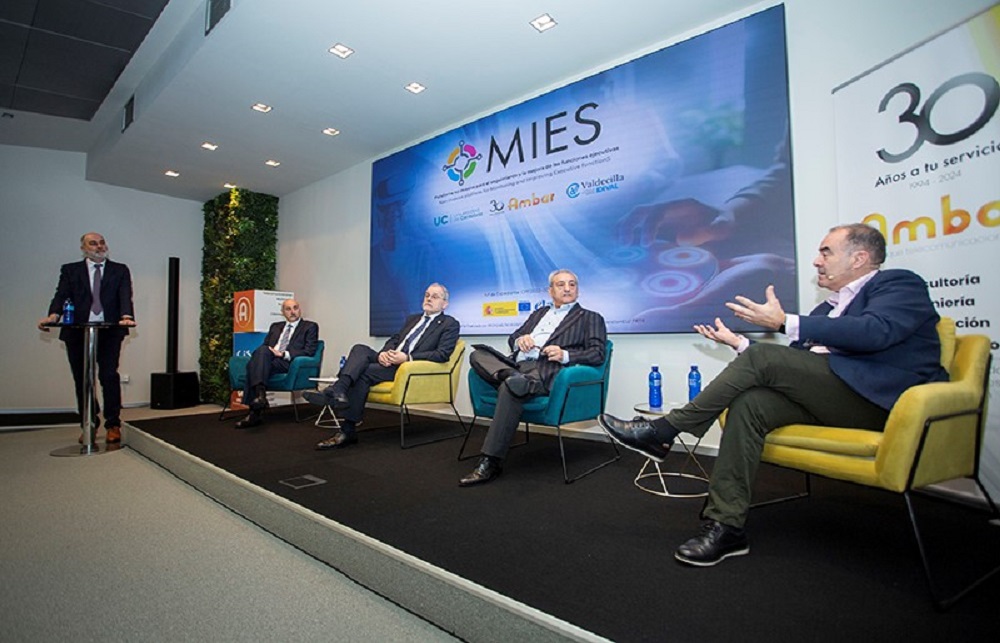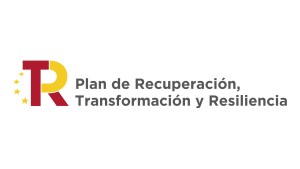The initiative is formed by a consortium between IDIVAL, the Ámbar Group and the University of Cantabria
The scientific director of the Marqués de Valdecilla Health Research Institute (IDIVAL), Marcos López-Hoyos; the rector of the University of Cantabria (UC), Ángel Pazos; and the president of Grupo Ámbar, Pablo Gómez, presented yesterday, together with the researcher and professor in Photonic Engineering, José Miguel López-Higuera; and the director of Ámbar Telecommunications, Roberto García, the MIES project, a platform for the monitoring and improvement of cognitive functions of elderly people.
This is an initiative that will work over the next 36 months to design and develop a non-invasive technological platform to monitor and evaluate the executive functions of elderly people living in geriatric residences.
Financed by the Ministry of Science, Innovation and Universities and by the European Union through the NextGeneration Funds, the initiative is the result of the public-private collaboration between the University of Cantabria, IDIVAL and Grupo Ámbar, and has a budget of 1.94 million euros.
López-Hoyos pointed out that “this project has an enormous transfer, sustainable for the healthcare system because, if it achieves the expected results, we will obtain a non-invasive platform integrating data to be applied to the healthcare system”.
The Rector recalled that this is an initiative “of general interest because it is an example of transfer and collaboration with the private sector and other public sectors, and of specific interest because we are working and developing methodologies in such a sensitive field as health, dependence and aging”.
The researcher from the Photonics Engineering Group (UC-IDIVAL) López-Higuera, explained that this project “will provide objective measures to evaluate the physical and cognitive capacity of patients, with which to prolong the autonomy of the elderly and facilitate the healthiest possible aging.
In this sense, Pablo Gómez explained that the result of the work of the three institutions will be a “new platform that will improve the evaluation and monitoring of various characteristics related to the aging process. In particular, the new detection devices will complement data-driven management tools based, in turn, on artificial intelligence. This will make it possible not only to measure aspects related to the health of each person, but also to generate a large volume of information that will enable progress in personalized medicine and healthy aging.”
The project foresees the hiring of 26 professionals.
PILOT TEST AT THE SAN CANDIDO RESIDENCE
MIES thus aims to transform the current models for monitoring and caring for the elderly and, to this end, the third phase of its development will consist of validating the approach at the San Cándido de Santander Residence.
The possibility of monitoring the daily routine of elderly people living in controlled environments will reduce the need for face-to-face testing and allow a higher quality service to be offered with the same volume of resources. In fact, according to project estimates, current monitoring costs could be reduced by more than 50%.
Moreover, from a social perspective, the proposed tools for the early detection and mitigation of physical or cognitive impairments will make it possible to prolong the autonomy of residents, by anticipating a significant reduction in the risk of falls, preserving cognitive functions for longer and helping to improve both their bone health and their muscular functions.
Finally, from the scientific point of view, the development of the project will try to show that it is possible to use technological tools to provide objective information for the evaluation and stimulation of physical and cognitive functions using gamified activities, as pointed out by José Miguel López-Higuera. The implementation of sensors in elements such as push buttons, pieces to be assembled or game cards will make it possible to monitor the patient in the background and eliminate the bias introduced in clinical scenarios. This will make it possible to obtain objective measurements of aspects such as attention, motor speed, visual memory or strength.
Thus, it will contribute to the state of the art of knowledge, providing a set of tools that, once validated by the international scientific community, could become a standard for the early detection of frailty at different levels, as well as cognitive impairment.
GAMIFICATION FOR NON-INVASIVE ASSESSMENT
The ability to communicate, manage, store and interpret data is an important aspect of the project, since it is planned to create interfaces that facilitate the integration of different types of data and are user-friendly for healthcare personnel.
The information will be presented to healthcare personnel in a convenient way and within an interoperable system that provides the data required for patient care. In that sense, by recognizing the patterns that govern these care processes, a more efficient management of resources could be achieved.
THE CHALLENGE OF AGING
The MIES project thus aims to become a reference tool for managing the challenge of an aging population, a global trend. In fact, the latest data from the National Institute of Statistics indicate that Cantabria is the fourth most aged region in Spain, with 178 people over 64 years of age for every 100 under 16. Furthermore, practically 8% (7.89%) of the Cantabrian population is 80 years of age or older.
Photo: From left to right, Roberto García, director of Ámbar Telecomunicaciones; José Miguel López-Higuera, head of the Photonic Engineering research group (UC-IDIVAL); Ángel Pazos, rector of the UC; Pablo Gómez, president of the Ámbar Group and Marcos López-Hoyos, scientific director of IDIVAL.





















